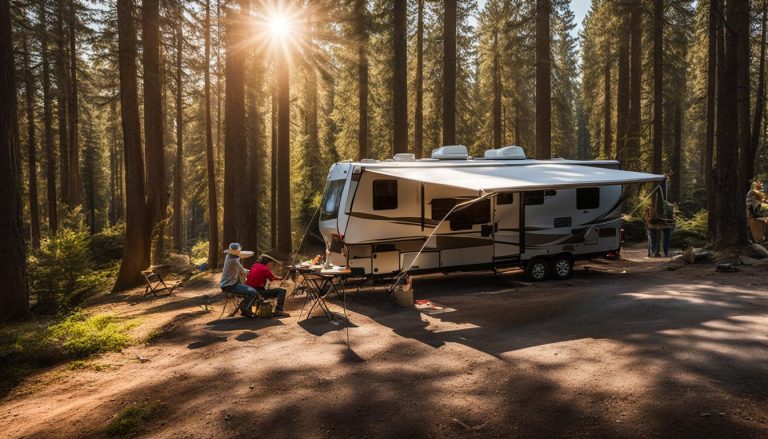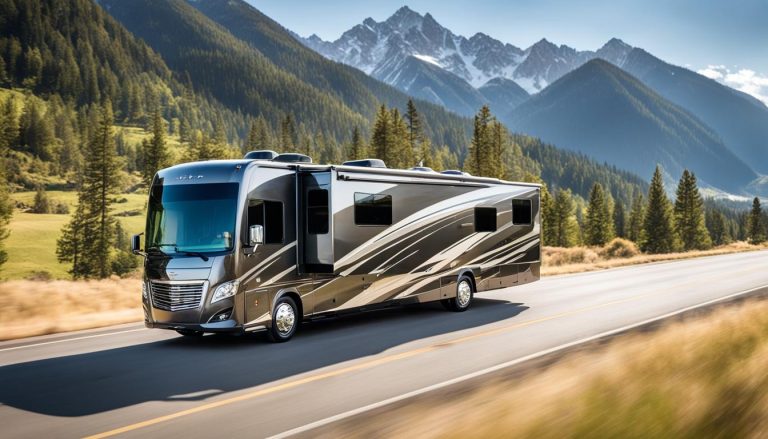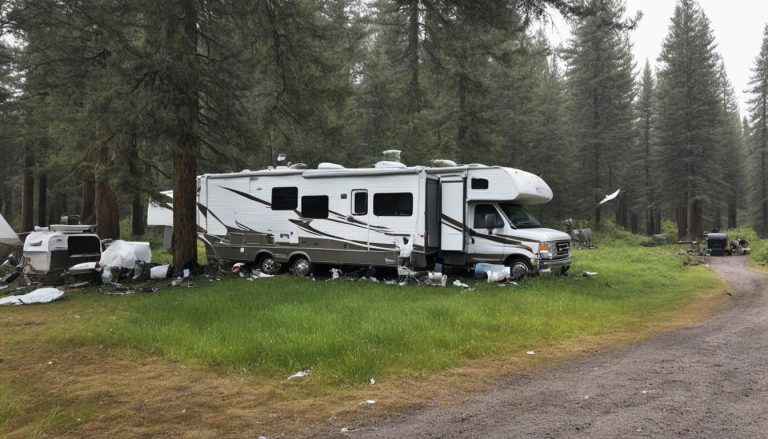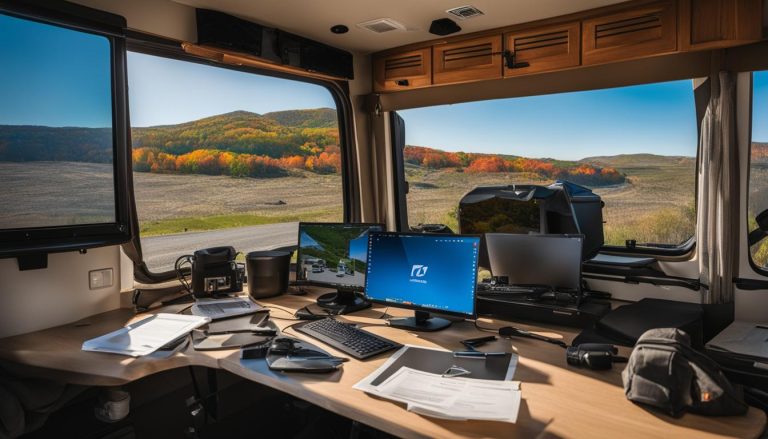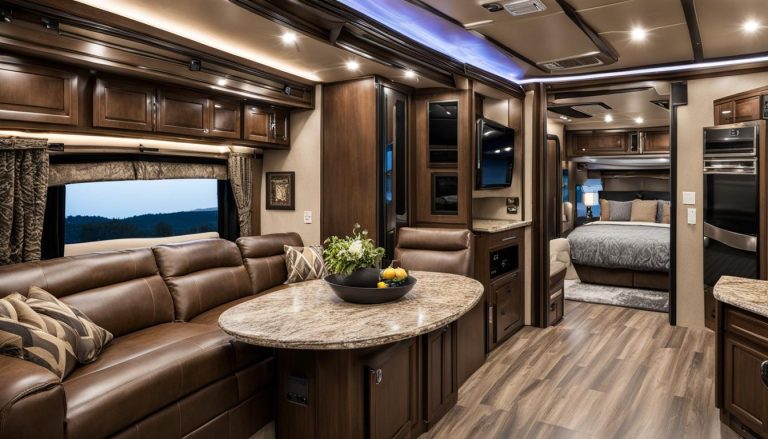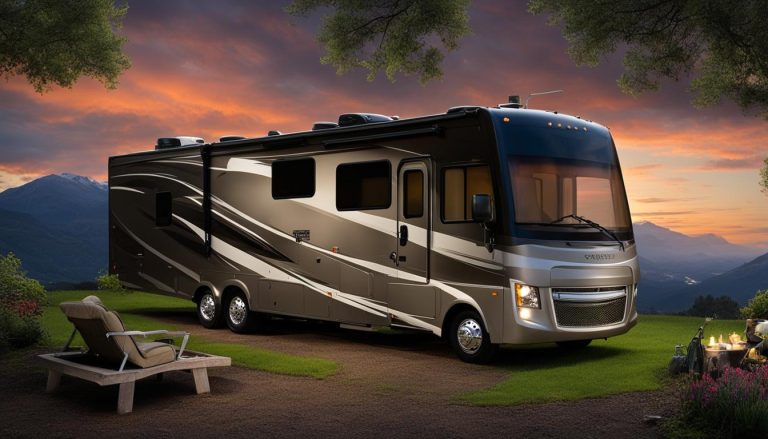Understanding How RV Toilets Work Easily
gorvlifestyle.com and its partners may earn a commission if you purchase a product through one of our links
RV toilets are a fundamental part of any recreational vehicle, ensuring comfort and convenience during your travels. However, they work differently compared to the toilets we use at home. Let’s delve into the mechanism and functionality of RV toilets to give you a better understanding of how they work.
There are three main types of RV toilets: gravity flush toilets, cassette toilets, and composting toilets. Each type has its unique features and benefits, catering to different preferences and needs.
Gravity flush toilets utilize water and gravity to create the necessary pressure for flushing. They are commonly found in motorhomes, fifth wheels, and travel trailers.
Cassette toilets, on the other hand, have a removable container that simplifies waste disposal. These toilets are popular in campervans and tent trailers, where space is limited.
Composting toilets use microorganisms to break down waste into compost, providing an eco-friendly solution for those seeking a sustainable lifestyle. Composting toilets are particularly suitable for campers traveling to remote locations with limited water access.
It’s essential to note that RV toilets typically have smaller bowls and use less water compared to residential toilets. The compact design and water efficiency are tailored to meet the specific needs and constraints of RV living.
To operate an RV toilet effectively, you need to follow a simple process. Add water to the bowl, do your business, flush, and add additional water if required. However, it’s crucial to only flush human waste, RV toilet paper, and RV tank treatment down the toilet to avoid any plumbing issues.
Key Takeaways:
- RV toilets come in three main types: gravity flush toilets, cassette toilets, and composting toilets.
- Gravity flush toilets use water and gravity to create flushing pressure and are commonly found in motorhomes, fifth wheels, and travel trailers.
- Cassette toilets have a removable waste container and are commonly found in campervans and tent trailers.
- Composting toilets use microorganisms to break down waste into compost and are suitable for off-grid camping.
- RV toilets have smaller bowls and use less water compared to residential toilets.
Types of RV Toilets
When it comes to RV toilets, there are three main types to choose from: gravity flush toilets, cassette toilets, and composting toilets.
Gravity Flush Toilets: These toilets use the power of gravity and water pressure to create a flushing mechanism. They are commonly found in motorhomes, fifth wheels, and travel trailers. When you activate the flush, water flows into the bowl and creates enough pressure to push waste down into the holding tank below. Gravity flush toilets are reliable and easy to use, making them a popular choice among RV owners.
Cassette Toilets: If you have a smaller RV like a campervan or a tent trailer, a cassette toilet may be the best option for you. These toilets have a removable wastewater tank, known as the cassette, which can be easily taken out and emptied at a designated dumping station. Cassette toilets are compact and efficient, making them ideal for smaller living spaces.
Composting Toilets: For campers who value water conservation and want a more eco-friendly option, composting toilets are a great alternative. These toilets use the power of microorganisms to break down waste into compost. The solid waste is separated from liquids, and the liquids are evaporated. Once the composting process is complete, the solid waste can be safely disposed of. Composting toilets are ideal for those traveling to remote locations with limited water access.
In summary, understanding the different types of RV toilets can help you make an informed decision about which one is right for your RV and camping needs.
| Type of RV Toilet | Flush Mechanism | Commonly Found in |
|---|---|---|
| Gravity Flush Toilet | Water and gravity | Motorhomes, fifth wheels, travel trailers |
| Cassette Toilet | Removable cassette | Campervans, tent trailers |
| Composting Toilet | Microorganisms | Various RV types |
Differences Between RV Toilets and Residential Toilets
RV toilets differ from residential toilets in several key aspects. Understanding these differences can help you make informed decisions when choosing and using an RV toilet.
Water Usage
One notable difference is the water usage. RV toilets are designed to conserve water, as freshwater supply and holding tank capacity are limited in RVs. As a result, RV toilets use significantly less water compared to residential toilets. This water conservation measure ensures that you can extend your water supply while on the road.
Size and Material
Another difference lies in the size and material of RV toilets. Due to space constraints, RV toilets have smaller bowls compared to residential toilets. The smaller size allows for better fitment in compact RV bathrooms and reduces the overall weight of the toilet. RV toilets are often made with lightweight materials to further optimize weight and fuel efficiency for your RV.
Flushing Process
The flushing process in RV toilets also differs from residential toilets. In most RVs, you need to manually fill the toilet bowl with water before flushing, unlike residential toilets that flush automatically at the push of a lever or button. This manual process allows you to regulate water usage and ensure efficient operation while on the move.
Waste Disposal
RV toilets require specific waste disposal practices. It is essential to only flush human waste, RV toilet paper, and RV tank treatment down the toilet. Flushing other waste or non-RV-friendly materials can lead to clogs and damage the plumbing system. Proper waste disposal is crucial for maintaining the functionality and longevity of your RV toilet.
In summary, RV toilets differ from residential toilets in terms of water usage, size and material, flushing process, and waste disposal practices. Understanding these differences will help you make informed choices when selecting and using an RV toilet.
| RV Toilets | Residential Toilets |
|---|---|
| Use less water to conserve freshwater supply and holding tank capacity | Use more water for a powerful flush |
| Have smaller bowls and lightweight materials | Have larger bowls and heavier materials |
| Require manual water filling and flushing | Flush automatically with a lever or button |
| Require specific waste disposal practices | Handle various waste types |
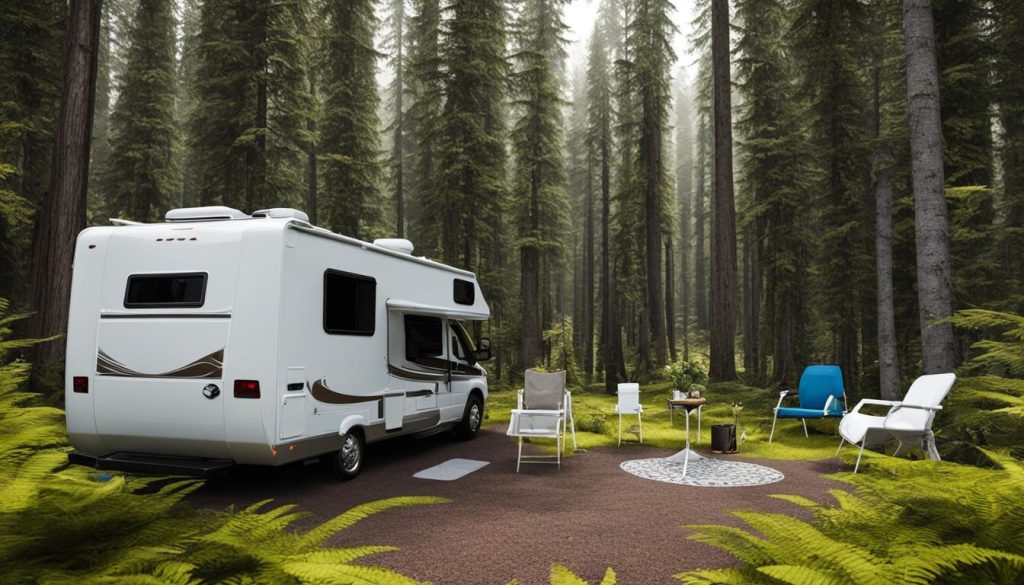
How to Use an RV Toilet
To make the most of your RV toilet, it’s essential to know how to use it properly. Follow these simple steps for hassle-free RV toilet usage:
- Locate the water valve for your RV toilet.
- Turn on the water source, either from onboard your RV or a city water hookup.
- Add water to the bowl by pressing down halfway on the foot pedal or pulling up on the hand lever.
- Do your business, but avoid adding excessive toilet paper to the bowl.
- Flush by pressing down fully on the foot pedal or pushing down on the lever.
- If necessary, add more water to ensure proper flushing and clean bowl coverage.
- Remember to only flush human waste, RV toilet paper, and RV tank treatment down the toilet.
By following these steps, you can maintain a clean and efficient RV toilet system throughout your travels.
RV Toilet Maintenance Tips
To keep your RV toilet in good condition, regular maintenance is crucial. Follow these simple tips:
- Use RV or septic-safe toilet paper: Use specialized RV or septic-safe toilet paper that breaks down easily to prevent clogs and ensure smooth flushing.
- Use RV tank treatments: Use RV tank treatments to control odor and keep your RV toilet tank clean. These treatments break down waste and help prevent buildup.
- Add tank treatments after emptying the black tank: After emptying the black tank, fill the bowl with water, add the tank treatment as directed, and flush. This ensures proper distribution and effectiveness.
- Only flush approved items: Stick to flushing only human waste, toilet paper designed for RVs, water, and RV tank treatments. Avoid flushing any non-biodegradable items or harsh chemicals, as they can damage your RV plumbing system.
- Use enough water: Ensure there is enough water in the toilet bowl to cover the bottom before flushing. This helps create a seal and prevents waste from sticking to the sides of the bowl.
- Maintain the toilet seal: Regularly lubricate the toilet seal with RV toilet seal lubricant or plumber’s grease to keep it functioning properly. This helps prevent leaks and ensures a tight seal.
- Replace a cracked toilet seal: If you notice any cracks or damage to the toilet seal, it’s important to replace it promptly. A damaged seal can lead to leaks and odors.
By following these maintenance tips, you’ll keep your RV toilet clean, efficient, and odor-free, enhancing your overall RVing experience.
Emptying and Cleaning RV Toilet
Emptying and cleaning your RV toilet is an essential part of regular maintenance to ensure proper functionality and hygiene. Follow these steps to effectively empty and clean your RV toilet:
1. Emptying the Black Tank
The black tank holds the wastewater from the RV toilet. To empty the black tank:
- Connect an RV sewer hose securely from the toilet’s outlet to a dump station or sewer connection.
- Open the black tank valve.
- Allow the contents to flow out completely.
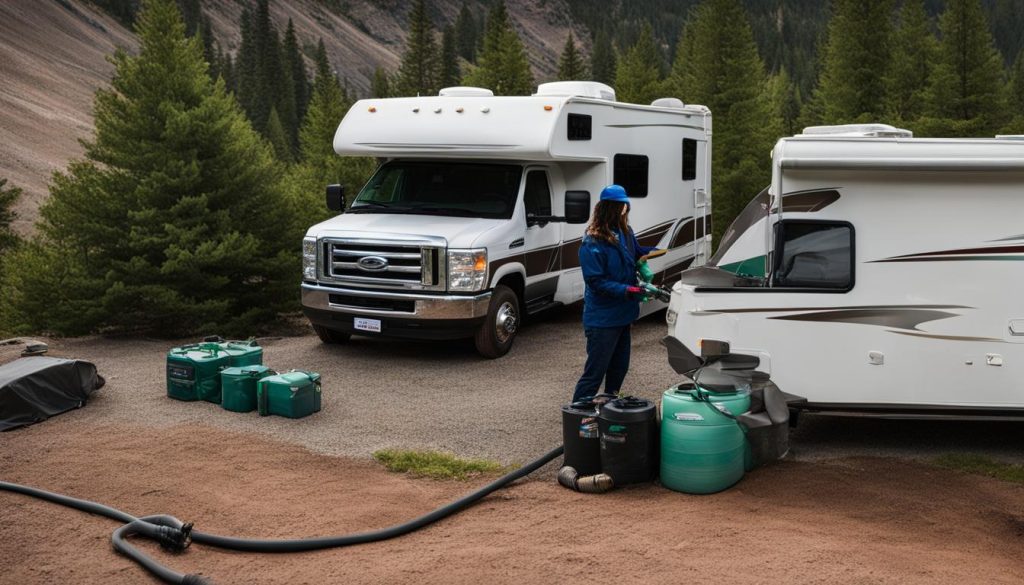
2. Cleaning the Black Tank
After emptying the black tank, it’s important to clean and sanitize it to remove any residue and unpleasant odors. Follow these steps:
- Add fresh water to the black tank, filling it up to approximately one-third or halfway.
- Add RV toilet cleaning products or enzyme-based treatments designed for RV black tanks. These products help break down waste and control odors.
- Close the black tank valve.
- Drive or tow the RV for a short distance to allow the cleaning solution to agitate within the tank, aiding the cleaning process.
- Finally, empty the tank again at a suitable dump station or sewer connection.
Never leave the black tank valve open when connected to a sewer hookup, as it can lead to sewage backups and potential damage to your RV’s plumbing system.
3. Using RV-Safe Cleaning Products
When cleaning your RV toilet, it’s crucial to use cleaning products specifically formulated for RV toilets. These products are designed to effectively clean and deodorize while being safe for your RV’s plumbing system and toilet seal. Avoid using regular household cleaners, as they may contain chemicals that can damage the toilet’s components.
4. Winterizing the Black Tank
Before freezing temperatures set in, it’s important to properly winterize the black tank to prevent any damage caused by freezing water. Follow these steps:
- Ensure the black tank is emptied completely.
- Turn off the water supply to the RV toilet.
- Add RV antifreeze specifically formulated for black tanks to the toilet bowl.
By following these steps, you can ensure your RV toilet remains clean, odor-free, and in optimal working condition.
RV Toilet Options for Different RV Types
When it comes to RV toilets, different types of RVs may require specific toilet options that best suit their needs and limitations. Motorhomes, fifth wheels, and travel trailers often come equipped with gravity flush toilets. These toilets are designed for larger holding tanks and use water and gravity to create flushing pressure. They are a popular choice for larger RVs that prioritize comfort and convenience.
On the other hand, if you own a campervan or a tent trailer, you may find cassette toilets to be more suitable. These toilets are known for their portability and water efficiency. With a removable waste container, cassette toilets can be easily emptied and cleaned, making them ideal for smaller RVs with limited space.
For those planning off-grid adventures, composting toilets are an excellent option. These toilets don’t require water or plumbing and use microorganisms to break down waste into compost. They are perfect for RVers who value sustainability and want to minimize their impact on the environment.
When choosing an RV toilet, consider your RV type and lifestyle. Gravity flush toilets are great for larger RVs with ample space, while cassette toilets offer convenience for smaller RVs. If you’re a nature lover or planning to stay in remote locations, composting toilets may be a game-changer. Ultimately, the right RV toilet option will enhance your comfort, convenience, and overall RVing experience.
FAQ
How do RV toilets work?
RV toilets work differently than residential toilets. There are three main types of RV toilets: gravity flush toilets, cassette toilets, and composting toilets. Gravity flush toilets use water and gravity to create pressure for flushing. Cassette toilets have a removable container for waste disposal. Composting toilets use microorganisms to break down waste into compost.
What are the types of RV toilets?
The three main types of RV toilets are gravity flush toilets, cassette toilets, and composting toilets.
How do RV toilets differ from residential toilets?
RV toilets have smaller bowls and use less water than residential toilets. They also require specific waste disposal practices and can clog easily if too much waste is flushed at once.
How do you use an RV toilet?
To use an RV toilet, you need to add water to the bowl, do your business, flush, and add more water if necessary. Only flush human waste, RV toilet paper, and RV tank treatment down the toilet.
What maintenance tips are there for RV toilets?
To maintain your RV toilet, use RV or septic-safe toilet paper, use RV tank treatments, add enough water to cover the bottom of the bowl before flushing, lubricate the toilet seal, and only flush appropriate waste and cleaning products.
How do you empty and clean an RV toilet?
To empty the black tank of an RV toilet, connect an RV sewer hose from the toilet’s outlet to a dump station or sewer connection, open the valve, and let the contents flow out. Clean the toilet with RV-safe cleaning products.
What are the toilet options for different types of RVs?
Different types of RVs may have specific toilet options. Motorhomes, fifth wheels, and travel trailers often have gravity flush toilets. Campervans and tent trailers may have cassette toilets. Some off-grid RVs may have composting toilets.

